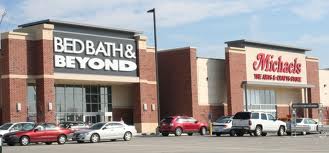These Are All Important Terms in the CMBS Industry
You will recall that the term, "CMBS", is short for commercial mortgage-backed securities. CMBS loans are large commercial real estate loans that are originated by banks and conduits according to very strict, published guidelines. CMBS loans are usually secured by loans on the four basic food groups - multifamily buildings, office buildings, retail buildings, and industrial buildings.
 When about $1 billion of new CMBS loans can be assembled, the loans are assigned to a trust. The trust then issues bonds (securities), backed by the commercial loans in the trust. These bonds are then sold by investment bankers, like Goldman Sachs or Morgan Stanley, to investors - like insurance companies, pension plans, and wealthy trusts. The banks and conduits, which originated the CMBS loans, get their money back, and the whole process starts all over.
When about $1 billion of new CMBS loans can be assembled, the loans are assigned to a trust. The trust then issues bonds (securities), backed by the commercial loans in the trust. These bonds are then sold by investment bankers, like Goldman Sachs or Morgan Stanley, to investors - like insurance companies, pension plans, and wealthy trusts. The banks and conduits, which originated the CMBS loans, get their money back, and the whole process starts all over.
The CMBS industry competes against life insurance companies for the largest and nicest commercial real estate loans in America. If you pick out any nice skyscraper or huge shopping center in America, you can bet that the property is financed by either a life insurance company or a CMBS loan.
The life insurance companies almost always win. Think of it this way. Jennifer Aniston was a lovely lady, but when Angelina Jolie set her sights on Brad Pitt, well ... Angelina got the man she wanted. It's the same thing in commercial real estate finance. CMBS loans have terrific terms, but if MetLife wants the loan on a particular power center, well ... MetLife will get the loan. Fortunately for the CMBS industry, life companies only have a limited appetite. They simply don't have enough dough to make every large commercial real estate loan in the country.
But wait a minute. Suppose a 30-year-old office tower in New York City has a $300 million balloon payment coming due. What if none of the large life companies wants to do the deal? Could the CMBS industry handle a $300 million loan? After all, the typical CMBS offering is only on the order of $1.3 billion. That means a single loan could represent almost 25% of the entire CMBS offering. Yikes! Then think about an act of terrorism. Suppose terrorists blew up the building. The investors in that pool of CMBS loans would take an immense loss - far too large to be tolerable.
This is how the investment bankers handle big loans. First they started by taking a $70 million loan and splitting it into a $50 million "A-piece" and a $20 million "B-piece". The A-piece would obviously get paid before the B-piece. Only the $50 million A-piece would be added to the $1.3 billion CMBS offering, making that one large loan only around 4% of the total offering. The $20 million B-piece would be sold to a private buyer. This kind of structure was called an A/B Note.
The problem with the A/B Note structure, however, was two-fold. First, it only worked on loans up to around $100 million. After that, the A-piece was simply too large to put into a single CMBS offering. Secondly, the B-piece was often hard or expensive to sell.
Therefore the investment banks came up with the concept of pari passu notes. Pari passu is Latin for "on equal footing." Issuers of commercial mortgage-backed securities began to split large loans into a series of smaller notes, each note being equally entitled to a pro rata share of any payments received. For example, a $200 million loan might be split into 5 pari passu notes of $40 million each, with each note going into a different CMBS offering. This worked well until the number of new CMBS offerings slowed dramatically after 2008.
Most CMBS offerings today are fusion deals. A fusion deal is a CMBS offering with one very large pari passu note - perhaps as high as $120 million - and forty or so smaller deals of $5 million to $20 million.
Do you need a conduit loan? You can apply to scores of conduits with one simple mini-app using C-Loans.com.
Are you an accredited investor? If so, what are you doing with your IRA? Accredited investors are earning 11% to 13% in first trust deeds.
Read our blog on trust deed investing.
Are you a mortgage broker? Download our free Commercial Loan Placement Kit, that includes a list of 200 hungry commercial lenders, a Commercial Loan Placement Checklist, our wonderful whitepaper, How to Place a Commercial Loan When Banks Are Too Terrified to Lend, and our webinar on Structured Finance.
Are you a direct commercial borrower? Are you just browsing today? You should download our important, free whitepaper, How to Close a Commercial Loan During the Great Commercial Lending Drought.
Borrowers, wish you could get your hands on a free list of 200 commercial lenders?


